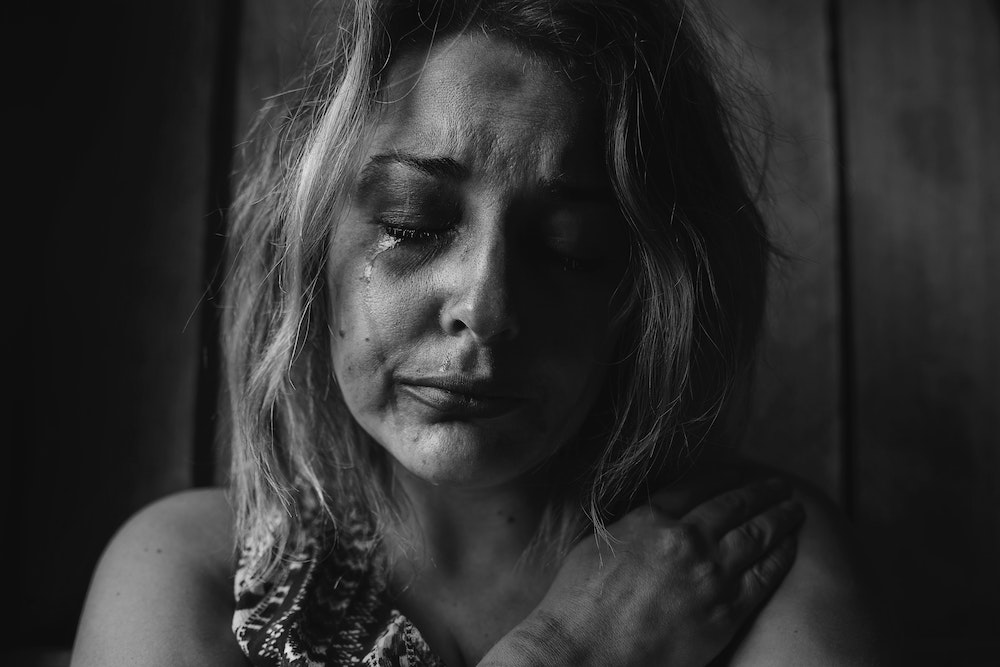 Jeremy Gibson is a GP in Derbyshire who works as a named GP for safeguarding children in Derby city.
Jeremy Gibson is a GP in Derbyshire who works as a named GP for safeguarding children in Derby city.
Threatened by COVID-19, the world has been on lockdown. To slow viral spread and the rampant escalation of clinical cases, nations have been practising social distancing. The most vulnerable are shielded in their own homes. Danger and death lie without; safety is to be found alone in the isolation of the home. The UK government’s message has been “Stay at home … Do not meet others, even friends and family.” But within the walls of their own homes many women face an enemy more terrifying than COVID-19.
The domestic abuse charity Refuge reported a 700% increase in calls in a single day.°
Within the walls of their own homes many women face an enemy more terrifying than COVID-19.
Under normal circumstances, worldwide about 30% of women report intimate partner violence (physical, sexual, or both) in their lifetime.(1) It is estimated that 1.3 million women suffered from domestic abuse° in England and Wales during the year ending March 2018. These women are at increased risk of experiencing difficulties with activities of daily living, gastrointestinal symptoms, chronic pain, memory loss, dizziness, headaches, vaginal discharge and sexually transmitted infections, emotional distress, depression, post-traumatic stress disorder and suicidal thoughts and attempts.(2-5) As they grow into adulthood, their children are more likely to have problems with drug and alcohol use, violence, sexual risk taking, mental ill health, smoking, cancer and cardiac and respiratory disease.(6)
The dynamics of domestic abuse are not straightforward.(7) In some relationships situational couple violence predominates, where both partners are equally aggressive towards each other. In others, one individual makes a concerted and sustained attempt to utterly control their partner. These abusers may be motivated by obsession and jealousy or simply driven by a determination to get their own way, no matter what. This is intimate terrorism. When an abused partner, who has been worn down by weeks, months or even years of abuse, finally hits back (violent resistance), the consequences can be deadly. Many simply want to leave but are afraid to do so. Their intimate terrorist has often convinced them they are useless and unable to fend for themselves. What happens if they are stalked and harassed, lose their job, their home or even their children? There is always the possibility they will be murdered.
We need to stay alert for indicators of domestic abuse in our patients.
When we finally emerge from the current pandemic, more women and children (throughout the world) will have suffered from and be experiencing the consequences of domestic abuse than ever before. Therefore, during this COVID-19 lockdown and afterwards we need to stay alert for indicators of domestic abuse in our patients, use appropriate questions to detect coercive and controlling behaviour and be ready to assess the risk of domestic homicide (using, for example, the SafeLives DASH risk assessment).° We should remain sensitive to their medical and mental health needs and support them as best we can. This may include signposting them to charitable organisations (see below) and referring children to social care and women to the Independent Domestic Violence Advocacy (IDVA) service or even the police, if we feel their life is under threat.
See also our post: Domestic abuse in the time of coronavirus°
Support organisations
National Domestic Violence Helpline
www.nationaldomesticviolencehelpline.org.uk]
0808 2000 247
Respect
[www.respect.uk.net]
0808 802 4040
Women’s Aid
[www.womensaid.org.uk]
0808 2000 247
Refuge
[www.refuge.org.uk]
0808 2000 247
The Elm Foundation
[www.theelmfoundation.org.uk]
01246 540 464
References
1. Heise LL, Ellsberg M, Gottemoeller M. Ending violence against women (population reports, series L, no 11). Baltimore: Johns Hopkins University School of Public Health, Center for Communications Programs, 1999
2. Ellsberg M, Jansen HA, Heise L, Watts CH, Garcia-Moreno C, Intimate partner violence and women’s physical and mental health in the WHO multi-country study on women’s health and domestic violence: an observational study. The Lancet 2008; 371 (9619): 1165-1172.
3. JC Campbell. Health consequences of intimate partner violence. The Lancet 2002; 359 (9314): 1331-1336.
4. Coker AL, Davis KE, Arias I, Desai S, Sanderson M, Brandt HM, Smith PH. Physical and mental health effects of intimate partner violence for men and women. American Journal of Preventive Medicine 2002, 23 (4): 260-268.
5. Kumar S, Jeyaseelan L, Suresh S, Ahuja RC. Domestic violence and its mental health correlates in Indian women. The British Journal of Psychiatry 2005; 187 (1): 62-67.
6. Hughes K, Bellis MA, Hardcastle KA, Sethi D, Butchart A, Mikton C, Jones L, Dunne MP. The effect of multiple adverse childhood experiences on health: a systematic review and meta-analysis. Lancet Public Health 2017; 2 (8): e356–366.
7. Johnson MP. A typology of domestic violence: intimate terrorism, violent resistance, and situational couple violence. Northeastern University Press, 2008.







[…] See also our article: The GP role in domestic violence during COVID-19° […]